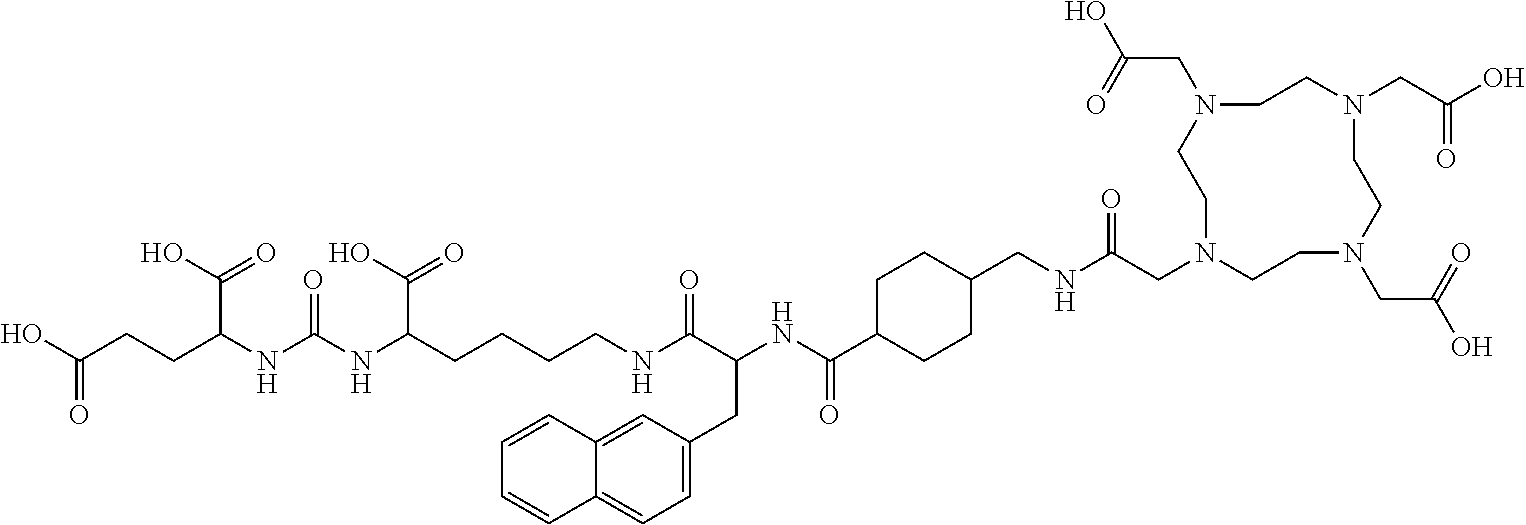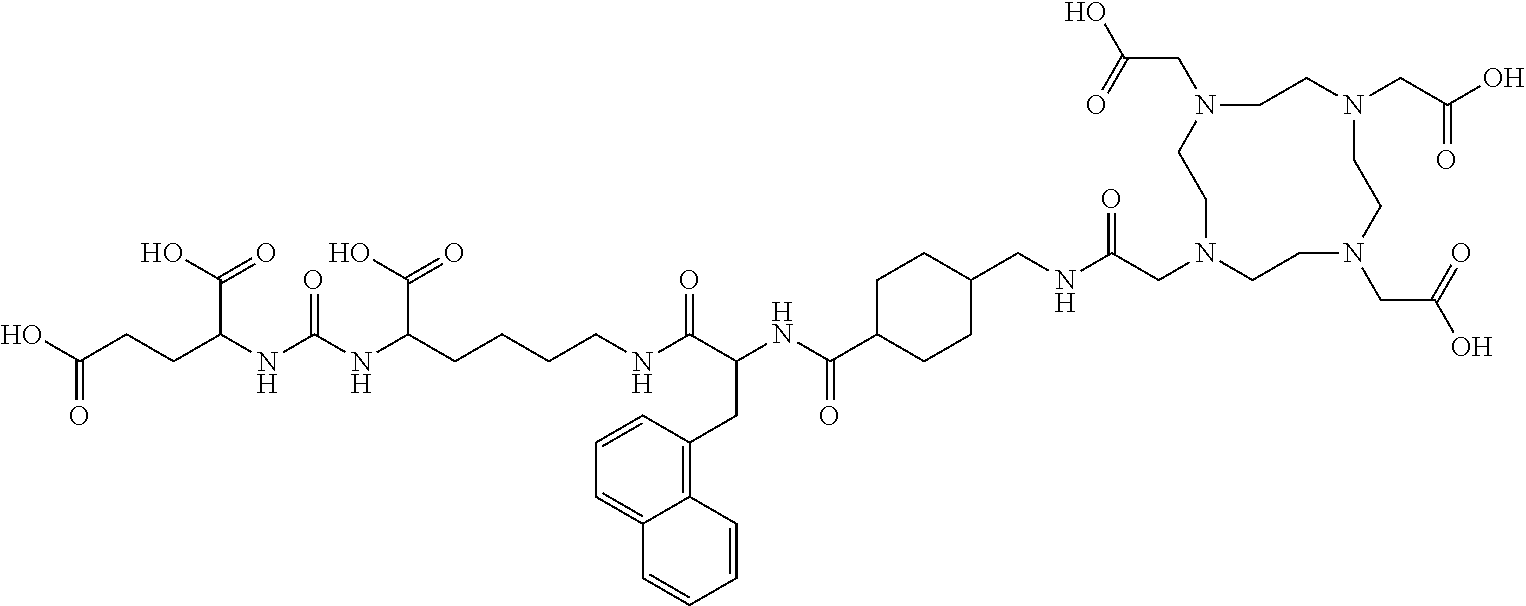Method for labeling a prostate-specific membrane antigen ligand with a radioactive isotope
a prostate-specific membrane antigen and radioactive isotope technology, applied in the field of radioactive isotope labeling of prostate-specific membrane antigen ligands, can solve the problems of low sensitivity and specificity, decomposition of psma ligands, radioactive isotopes, etc., and achieve the effect of fast, simple and safe manner
- Summary
- Abstract
- Description
- Claims
- Application Information
AI Technical Summary
Benefits of technology
Problems solved by technology
Method used
Image
Examples
example 1
Radio-Synthesis of 68Ga-Labeled PSMA Tracer According to a Known Technique
[0067]Disposable cassette kits and chemicals including the PSMA ligand DKFZ-PSMA-11 in GMP-compliant grade used for the radio-synthesis were obtained from ABX advanced biochemical compounds (Germany).
[0068]The synthesis of the 68Ga-labelled PSMA ligand as previously described (Eder M. et al., Novel preclinical and radiopharmaceutical aspects of [68Ga]Ga-PSMA-HBED-CC: A new PET tracer for imaging of prostate cancer, Pharmaceuticals, 2014, 7, 779-796) was reproduced reliably and slightly modified on a fully automated synthesis module in 80%±5% decay corrected radiochemical yield within 35 minutes, applying single-use cassette-based kits.
[0069]An audit trial was recorded for each radio-synthesis including all performed steps and courses of radioactivity on three gamma detectors, gas flow and temperature of the heating unit. The steps involved include: (i) conditioning of the purification cartridge; (ii) elution o...
example 2
Two Modes of Operation for Using the Automated Radio-Synthesis Module
[0071]The automated synthesis module can be carried out using either reusable or disposable reaction vials.
[0072]When reusable vials are used, the mode of operation includes the steps of: (a) adding into the reaction vial a PSMA ligand and sodium formate to reach a working pH of from about 4.0 to about 8.0; (b) automatically eluting the radioactive isotope generator by fractionation with HCl 0.1N (about 0.5 ml for 90Y or 177Lu, or about 1.8 ml for 68Ga); (c) heating the reaction vial at about 95° C. (30 minutes for 90Y or 177Lu, or 5 minutes for 68Ga); (d) purifying the radiolabeled PSMA tracer by passing the crude product through cation exchange column, where the labeled PSMA tracer remains on the column and the free radioactive isotopes are removed and discarded; (e) passing saline through said column to remove residual HCl; (f) eluting the labeled PSMA tracer from the cation exchange column with about 0.5 ml 50%...
example 3
Radio-Synthesis of 68Ga-Labelled DKFZ-PSMA-11 Using the “Shake & Bake” Method
[0074]Radio-synthesis of 68Ga-labeled DKFZ-PSMA-11 was carried out using a kit comprising (i) a disposable reaction vial containing the PSMA ligand (10 μg) and sodium formate (800-1800 mg), both in lyophilized form; (ii) an elution vial containing 0.1N HCl, for elution of the 68Ge / 68Ga generator; and (iii) a buffer vial containing 1N NaOH, for pH adjustment.
[0075]The procedure of radiolabeling the PSMA tracer was performed by: (a) eluting the 68Ge / 68Ga generator by fractionation with about 1.8 ml HCl 0.1N directly into the reaction vial; (b) mixing and incubating the reaction vial at room temperature for about 5 minutes; and (c) adjusting the pH in the reaction vial, if lower than 4.0, by adding 0.1 ml 1N NaOH until reaching a pH in the range of 4.0 to 8.0.
[0076]A similar experiment conducted with a disposable reaction vial containing 30 μg of the PSMA ligand, reduced the incubation time by about 2 to 3 min...
PUM
| Property | Measurement | Unit |
|---|---|---|
| temperature | aaaaa | aaaaa |
| time | aaaaa | aaaaa |
| pH | aaaaa | aaaaa |
Abstract
Description
Claims
Application Information
 Login to View More
Login to View More - R&D
- Intellectual Property
- Life Sciences
- Materials
- Tech Scout
- Unparalleled Data Quality
- Higher Quality Content
- 60% Fewer Hallucinations
Browse by: Latest US Patents, China's latest patents, Technical Efficacy Thesaurus, Application Domain, Technology Topic, Popular Technical Reports.
© 2025 PatSnap. All rights reserved.Legal|Privacy policy|Modern Slavery Act Transparency Statement|Sitemap|About US| Contact US: help@patsnap.com



